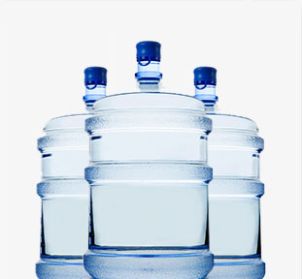
TCE in Water: What You Need to Know

You may have seen recent reports sharing concerns about problems like microplastics or PFAS (“forever chemicals”) in North American drinking water. There’s another potential issue that’s making news lately as well – TCE in water.
TCE, or trichloroethylene, is a volatile organic chemical commonly used as an industrial solvent. It’s man-made, and while it doesn’t occur naturally, it can be found in nature (including soil and groundwater). Unfortunately, that means TCE could end up in your drinking water.*
Recently, the U.S. Environmental Protection Agency (EPA) announced a proposed ban on this toxic substance. But what does that mean for your water supply right now, and what should you know to protect yourself in the meantime?
Here’s a look at TCE in North American water and how to address it.
EPA Proposes Trichloroethylene (TCE) Ban
In late 2023, the EPA announced a proposal to ban trichloroethylene. If passed, the U.S. would no longer be “manufacturing, processing and distributing” the toxic chemical, according to Massachusetts Sen. Edward Markey. Recent EPA studies found that the country produces up to 250 million pounds of TCE every year — and, according to a report by the Agency for Toxic Substances and Disease Registry (ATSDR), up to 18% of tested U.S. drinking water supply sources have some TCE contamination as a result.
TCE has been known as a carcinogen for decades. With the ban in place, says Markey, “we will no longer be exposing American families, communities and workers to a toxic chemical legacy that leaves questions, cancer and catastrophe in its wake.”
The specifics of the ban include limited exceptions — for example, gradually phasing out the use of TCE in the manufacture of some refrigerants and electric vehicle parts or using the chemical in certain labs and “critical” federal agency utilizations. It also outlines wastewater disposal expectations over 50 years.
While many support the ban, including environmental health organizations and families impacted by fatal TCE exposure, there has been some opposition. The American Chemistry Council noted TCE’s important uses in packaging and product manufacturing, calling the proposed ban “inconsistent with the underlying science.” The EPA, however, states there are safer alternatives available.
What Inspired The TCE Ban?
As a carcinogen, TCE in a private or community water system can have significant impacts on public health. Beyond increasing the risk of cancer, exposure to a high TCE concentration can also have more immediate effects, including headaches, respiratory irritation, dizziness, nausea and more.
Unfortunately, drinking water isn’t the only source of exposure. The general public can also encounter TCE contamination in ambient air and some consumer products and foods. Although the ATSDR report says “atmospheric levels are highest in areas of concentrated industry and population and lower in rural and remote regions,” this toxic chemical can still find its way into various communities.
Keep in mind, however, that many everyday substances are technically carcinogenic but only pose a problem in large amounts and over long periods of time. As such, the best approach is to stay informed and take steps to improve water quality where possible.
TCE in Canada
Although Canadian news outlets were quick to report on the EPA’s proposed ban, the country has yet to announce any official actions of its own. However, TCE is on the Government of Canada’s “toxic substances” list, where it’s acknowledged that the chemical has been found in indoor air, drinking water, surface water and groundwater across the country. Research via the Canadian Council of Ministers of the Environment and the Canadian Environmental Quality Guidelines also identifies TCE as a significant issue.
Key Takeaways for TCE in Water
There’s a lot to know about the proposed EPA ban and what it will mean for your drinking water quality. Here are a few highlights to focus on:
TCE Could Be in Your Water
While your water supply may be free of this contaminant, keep in mind that researchers have found TCE across North America, with the ATSDR report calling it “a common drinking water contaminant.” The same report also mentions that TCE isn’t always completely removed by conventional water treatment.
According to the National Cancer Institute, TCE “readily passes through soil and can accumulate in groundwater.” That means both city and well water could be contaminated by this chemical depending on the water source and location.
Ingestion Isn’t The Only Concern
Although it’s important to focus on your water quality, don’t forget that drinking isn’t the only way to encounter TCE. You could also produce a sort of “TCE vapor” when bathing, cooking or otherwise using your tap, increasing the chemical’s concentration in the air. You could also be exposed to TCE through food contaminated during growth, processing and at-home rinsing.
There Are Already Guidelines
The EPA’s ban hasn’t taken effect yet, but there are guidelines in place, which means government officials are already aware of potential problems and have taken steps to protect your health.
For example, both the U.S. and Canadian governments have set regulations around TCE concentrations. The Environmental Protection Agency (EPA) has set its federal regulations for TCE in drinking water at a maximum of 5 milligrams per liter (mg/L). The Guidelines for Canadian Drinking Water Quality has set an even lower maximum acceptable concentration of 0.005 mg/L.
Protecting Your Water from TCE
Even if the EPA’s ban were to go into effect tomorrow, it wouldn’t show significant results right away. After all, this ban only stops new TCE from being manufactured and distributed; it can’t address existing TCE in the same way. That means this chemical could remain in the North American water supply for some time — particularly in Canada, where no official ban proposals or similar announcements have yet been issued.
As such, it’s important to take control of your own water. Remember, even if you rely on the city for water distribution and treatment, TCE could still end up in your glass due to the longevity and complexity of the chemical. If you have a private well, you could be drawing from an aquifer or other groundwater source that has been polluted by TCE — particularly if you’re near certain types of industrial sites.
That’s why you should have a professional water test performed at least once a year. At Culligan®, our local water experts can send your water sample to our IL EPA-certified lab to identify trichloroethylene and other volatile organic chemicals (VOCs). A professional water test is recommended versus DIY test kits for the most comprehensive results as well as recommendations on solutions and next steps.
If your water test results indicate the presence of TCE — or any other concerning contaminant — the next step is to choose the appropriate treatment solution. For example, the Smart Aquasential® Reverse Osmosis Drinking Water Filtration System, when equipped with the Total Defense cartridge, is NSF 53-certified to reduce TCE. That means both systems meet rigorous standards for TCE treatment.
Take Charge of Your Water Quality Today
TCE isn’t a cause for panic, but it’s certainly a topic worth knowing about.
Although the EPA and other North American organizations are working to protect your water quality, these efforts require time and patience. Fortunately, you can take control with a water test and personalized treatment recommendations for your home.
Start with a free, in-home water test and consultation, then talk to your local water expert about additional lab tests to identify TCE.
Related Articles
FAQ: Are There PFAS in Bottled Water?
8 min read
What is PFAS Water Testing?
11 min read
Find A Location Near Me

Schedule Your Free
In-Home Water Test
Get better water in your home by scheduling an appointment with your local Culligan Water Expert.
Discover More
See All Articles

FAQ: Are There PFAS in Bottled Water? — qa-testing
Although drinking water quality has always been important, it’s a particularly hot topic these days — especially as researchers learn more about PFAS, sometimes called “forever chemicals.” These substances have […]
7 min read

Explore

Explore
Our Products

Water Softeners
With any of our soft water systems, get more out of your water-using appliances while spending less on energy and detergent.
View Products

Water Delivery
There’s never been a better time to enjoy the convenience of scheduled bottled water deliveries from the Culligan® Water Experts
View Products

Water Filtration Systems
Culligan's water filtration systems have improved water quality for thousands of families worldwide.
View Products